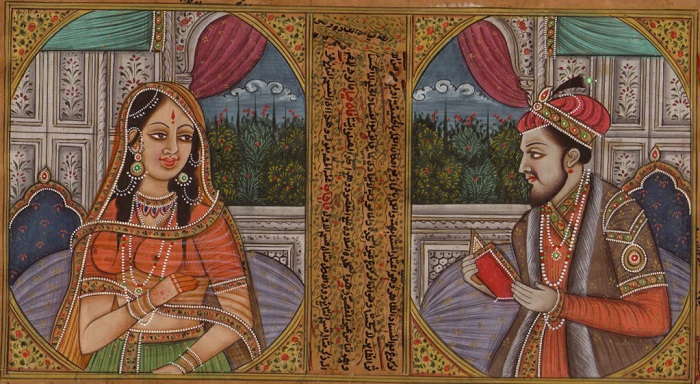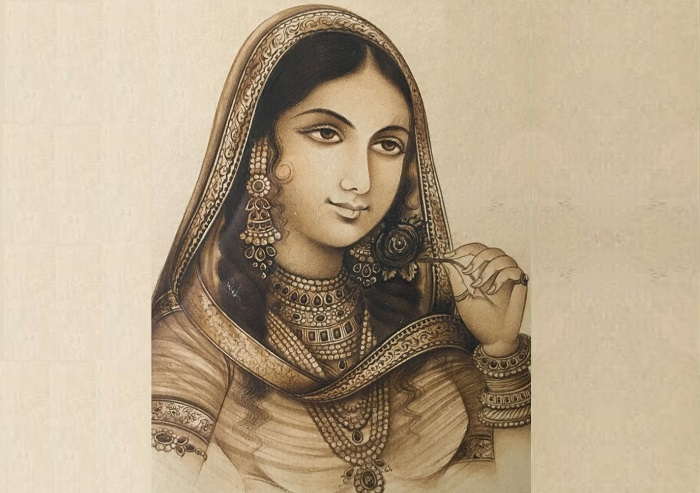Fast Facts
Birth: May 31, 1577
Place: Kandahar, Afghanistan
Death: December 17, 1645
Place: Lahore, Pakistan
Tomb: Tomb of Nur Jahan, Shahdara Bagh, Pakistan, Shahdara Bagh, Pakistan
Father: Mirza Ghias Beg
Mother: Asmat Begam
Siblings: Abu’l-Hasan Asaf Khan and Muhammad Sharif
Spouses: Sher Afgan Khan (1594–1607) and Jahangir (1611–1627)
Daughter: Ladli Begum (Mihr-un-nissa Begum)
Nur Jahan was the 20th and last wife of the fourth Mughal emperor, Jahangir. She was the most prominent and powerful empress in the history of the Mughal Empire. Strong, witty, well-educated, and charismatic, Nur Jahan was also beautiful, and hence held the attention of Jahangir in spite of being married to another man, Sher Afgan Khan. After her second wedding with Jahangir, Nur Jahan started controlling the affairs of the state and got involved in everything pertaining to the empire. In fact, she was called by some historians as the ‘power behind the throne’ during Jehangir’s reign. She became the most prominent empress of the empire, and the only Mughal empress to have a coin struck in her name. She was also the only empress to have commanded such honour from the emperor. Nur Jahan is also known for her bravery and weapon-wielding skills. During her reign, poets would praise her for her marksmanship and willingness to hunt down ferocious tigers. As a patron of arts and architecture, Nur Jahan commissioned many famous structures and edifices.

Image Credit : http://smartbitchestrashybooks.com/2015/11/real-life-romance-nur-jahan-jahangir/
Early Life
Nur Jahan was born to Asmat Begam and her husband Mirza Ghias Beg, who was an aristocrat. Mirza Ghias Beg along with his wife and children, Asaf Khan and Muhammad Sharif, relocated to India where Mughal Empire was at its peak with Emperor Akbar ruling the court.
Upon reaching Kandahar, Asmat Begam, who was pregnant with her third child, gave birth to her daughter whom they named Mehr-un-Nissa (Nur Jahan). She was born on May 31, 1577, post which her father’s fortunes changed as he managed to find a position in Emperor Akbar’s court.
Mirza Ghias Beg, who was convinced that the birth of his daughter had changed his fortunes, took special interest in his daughter’s education and other activities. He made sure Mehr-un-Nissa received the best of education, which was reciprocated beautifully by her as she quickly learned art, literature, dance, and music. She also learnt Persian and Arabic languages and eventually became fluent in both the languages.
First Marriage
Mehr-un-Nissa married Sher Afgan Khan in 1594, when she was 17 years old. Sher Afgan Khan served the Mughal army under the reign of emperors Akbar and Jahangir. In fact, Akbar himself had arranged his wedding with Mehr-un-Nissa as a reward of his loyalty and bravery. In 1605, Mehr-un-Nissa and Sher Afgan Khan were blessed with a daughter, whom they named Ladli Begum.
In 1607, two years after Jahangir had ascended the Mughal throne, Sher Afgan was killed amid several rumors. One such rumor claimed that Jahangir himself might have arranged for Sher Afgan’s killing. The speculation was that Emperor Jahangir had fallen in love with Mehr-un-Nissa and thus wanted to marry her no matter what. However, Jahangir waited for four years after Sher Afgan’s death, before marrying Mehr-un-Nissa.
Marriage to Jahangir
Soon after Sher Afgan’s death, Jahangir summoned Mehr-un-Nissa and her daughter to Agra, where they were appointed as ladies-in-waiting to one of Akbar’s widows, Ruqaiya Sultan Begum. Since Sher Afgan had made many enemies during his lifetime, Mehr-un-Nissa and her daughter’s lives were thought to be in danger. Hence, their safety was cited as one of the primary reasons for appointing them as ladies-in-waiting in the royal court.

Image Credit : http://smartbitchestrashybooks.com/2015/11/real-life-romance-nur-jahan-jahangir/
While serving in the royal court, Mehr-un-Nissa was also mourning the death of Sher Afgan and it eventually took her almost four years to get herself out of the grief. Meanwhile, she had built a cordial relationship with Ruqaiya Sultan Begum. According to a Dutch merchant named Pieter van den Broecke, Ruqaiya Sultan Begum displayed great affection for the talented Mehr-un-Nissa.
In 1611, four years after the death of Sher Afgan, Emperor Jahangir proposed to Mehr-un-Nissa during the festival of ‘Nowruz,’ which marks the beginning of the New Year. Jahangir managed to convince Mehr-un-Nissa, post which their wedding was arranged. Jahangir married her on May 25, 1611 and bestowed upon her the title ‘Nur Mahal.’ Five years later, she was honored with the title of ‘Nur Jahan,’ which translates to ‘Light of the World.’ Mehr-un-Nissa was thereafter addressed as Nur Jahan.
Mughal Empress
After her wedding with Jahangir, Nur Jahan quickly became a powerful empress as she possessed complete control over the Mughal emperor. Nur Jahan was a witty, strong, beautiful, and charismatic woman, who had complete attention of her husband. She became the emperor’s favorite wife and was hence considered powerful in the court. She had great influence on Jahangir and thereby had a direct influence on the affairs of the state. What made it easier for Nur Jahan to take complete control over political affairs was Jahangir’s addiction to alcohol and opium. Unlike her niece Mumtaz Mahal, who too had similar command over her husband, Nur Jahan was actively involved in the development of the empire and displayed aspirations to political power.
She sat alongside Emperor Jahangir while discussing state politics and military affairs and even held independent courts whenever required. She played a crucial role whenever Jahangir issued new orders as the emperor would always consult her before making any major decisions. Nur Jahan also had the power to issue orders. In fact, she is the only Mughal empress to have issued a decree known as ‘Nishan,’ a privilege reserved strictly for the male members of royalty. During Jahangir’s reign, she became the power behind the throne, the only Mughal empress to have enjoyed such a privilege. Nur Jahan also possessed great administrative skills and bravery. Apart from hunting down ferocious animals like tigers, she also used her bravery to defend the Empire’s borders at the time of Jahangir’s absence. She was also known for her ability to lead armed forces whenever required.
In 1626, Jahangir was captured by a rebellious group led by Mahabat Khan, who wanted to take control of a region, which was part of the Mughal Empire. Upon hearing about her husband’s captivity, Nur Jahan ordered the ministers to plan an attack in order to release the emperor. Nur Jahan led one of the units by riding a war elephant and charged towards Mahabat Khan’s camp. Unfortunately, she too, was captured by Mahabat Khan, who had failed to notice Nur Jahan’s astute intelligence, which later came to the fore. While being in captivity, Nur Jahan came up with an escape plan and was even able to raise an army to fight against Khan’s forces. However, she could not save her husband from death as he died on October 28, 1627, shortly after being rescued.
Later Years & Death
After Jahangir’s demise, Nur Jahan wanted her son-in-law Shahryar, who also happened to be Jahangir’s youngest son, to ascend the throne. However, she faced opposition from Shah Jahan, who eventually became successful in ascending the Mughal throne. Nur Jahan spent the rest of her life in a luxurious mansion in Lahore. An annual allowance of two lakh rupees was paid to her by Shah Jahan. During this phase of her life, she supervised the construction of her father Mirza Ghias Beg’s mausoleum. Nur Jahan passed away in Lahore on December 17, 1645, when she was 68 years old. Her mortal remains were buried at Shahdara Bagh in Lahore. Interestingly, her tomb, which now attracts many visitors, was built by herself during her reign.

Image Credit : https://anjanadesigns.blogspot.com/2014/12/mughal-romance-nur-jahan-and-jahangir.html
In Popular Culture
Thanks to her amazing personality, Nur Jahan has served as an inspiration to many novelists and filmmakers. Over the years, Nur Jahan has been the central character of literature and other art works. Some of them are mentioned below:
In 1931, the brave Mughal empress was portrayed beautifully by actress Jillo Bai in ‘Noor Jahan,’ which is a silent film. An American historian and novelist named Harold Lamb came up with a novel titled ‘Nur Mahal’ in 1935, which is based on Nur Jahan’s life. In 1939, filmmaker Sohrab Modi came up with a film titled ‘Pukar,’ in which actress Naseem Banu played Nur Jahan. In the 1953 historical drama film ‘Anarkali,’ Empress Nur Jahan was portrayed by actress Noor Jehan!
In 1963, director M. Sadiq helmed a film titled ‘Taj Mahal,’ in which actress Veena Kumari played Nur Jahan. Nur Jahan was then portrayed by Meena Kumari in the 1967 historical drama film ‘Noor Jahan,’ which was directed by M. Sadiq. Starting from 2002, noted novelist Indu Sundaresan came up with three books based on the life of Jahangir’s favorite wife. The books are titled as ‘The Twentieth Wife,’ ‘The Feast of Roses,’ and ‘Shadow Princess.’
In 2005, writer Tanushree Poddar wrote a book titled ‘Nur Jahan’s Daughter,’ which narrates the life story of Nur Jahan from her daughter’s point of view. In the same year, actress Pooja Batra played Nur Jahan in the 2005 historical flick, ‘Taj Mahal: An Eternal Love story,’ which was directed by Akbar Khan. In 2015, a historical drama titled ‘Siyaasat,’ which depicts the love story of Jahangir and his beloved wife Nur Jahan, was aired on ‘The EPIC Channel.’


